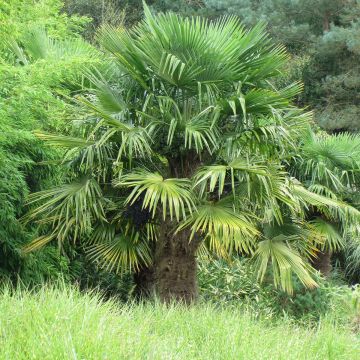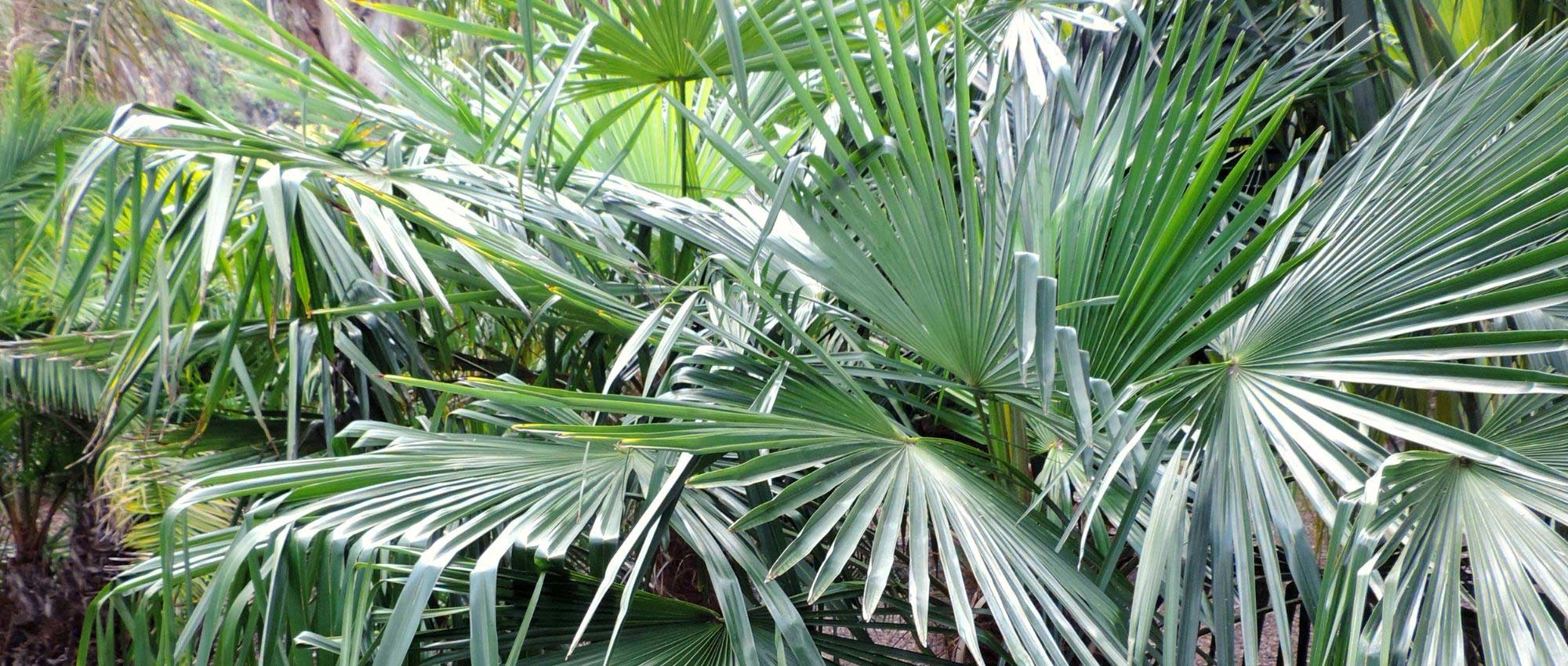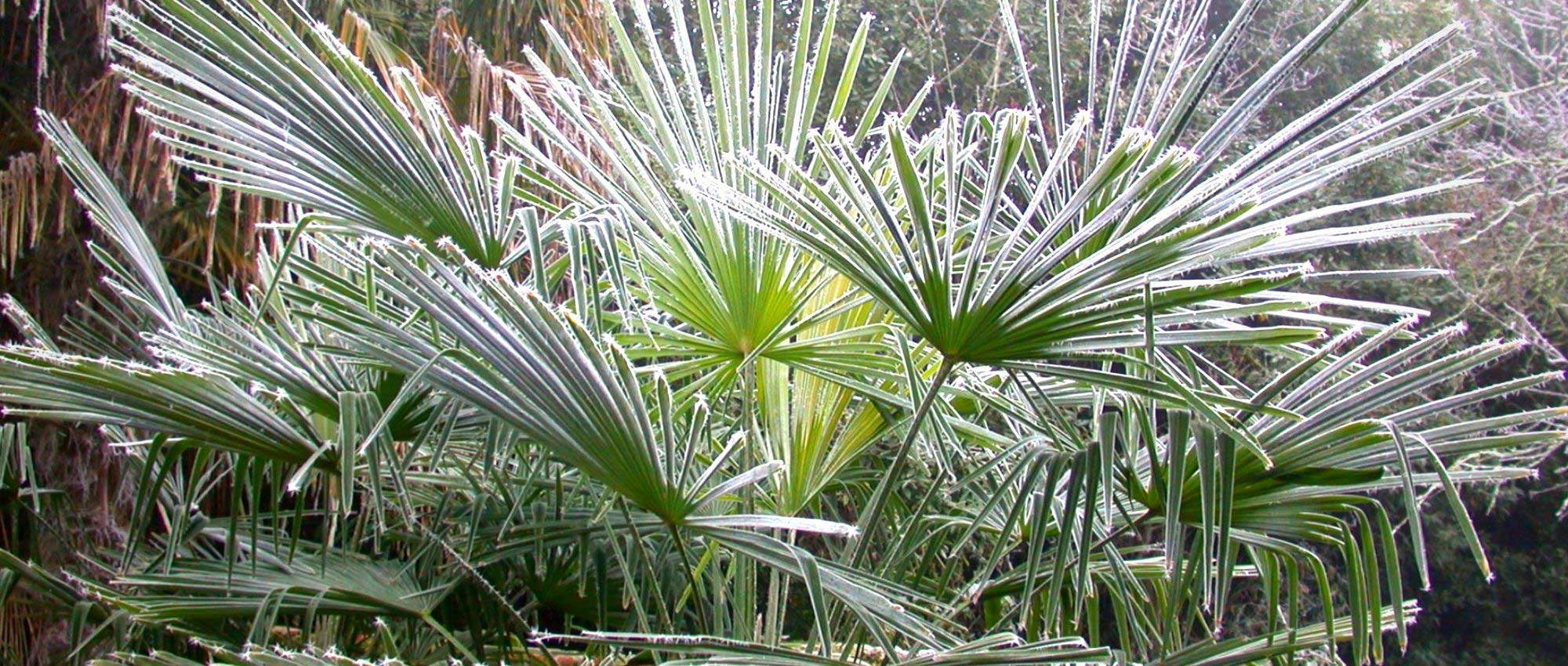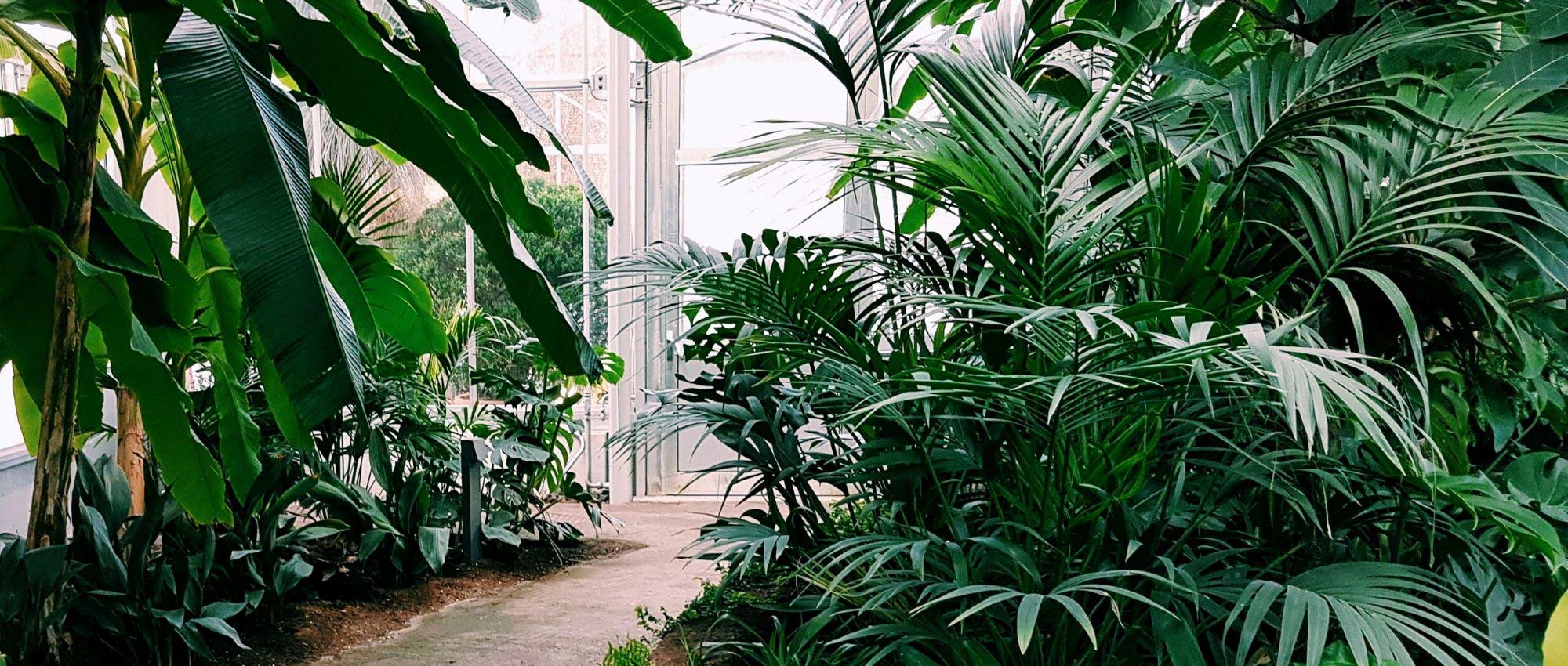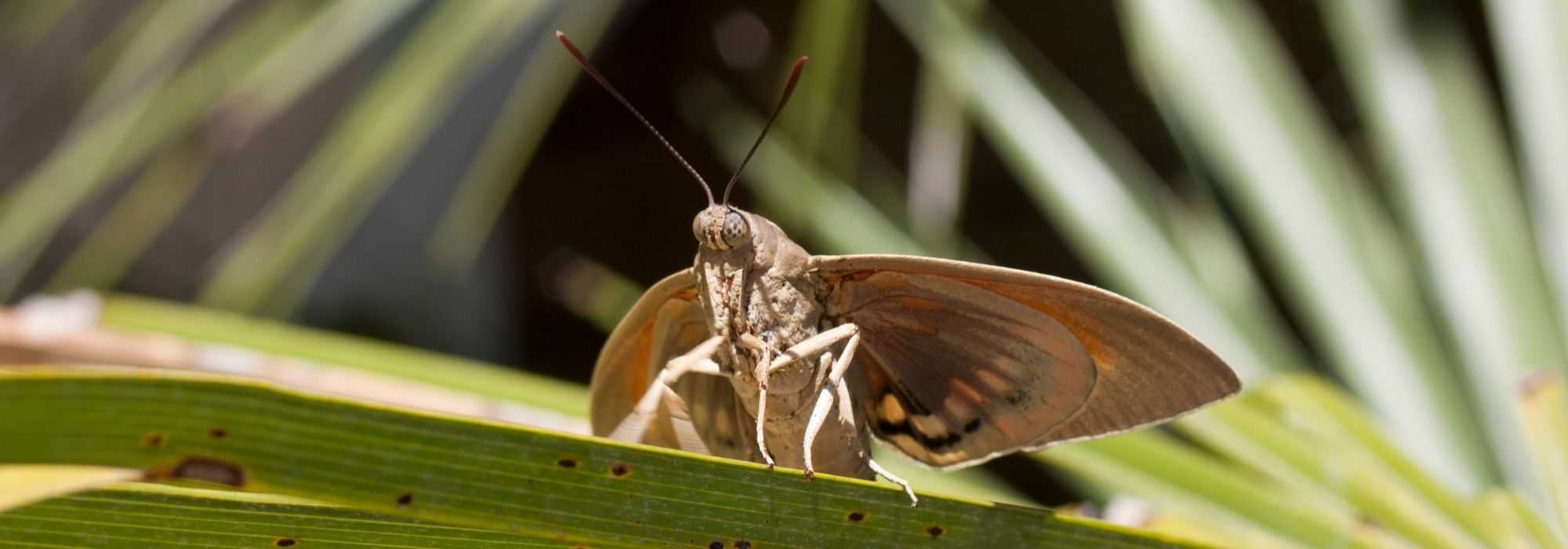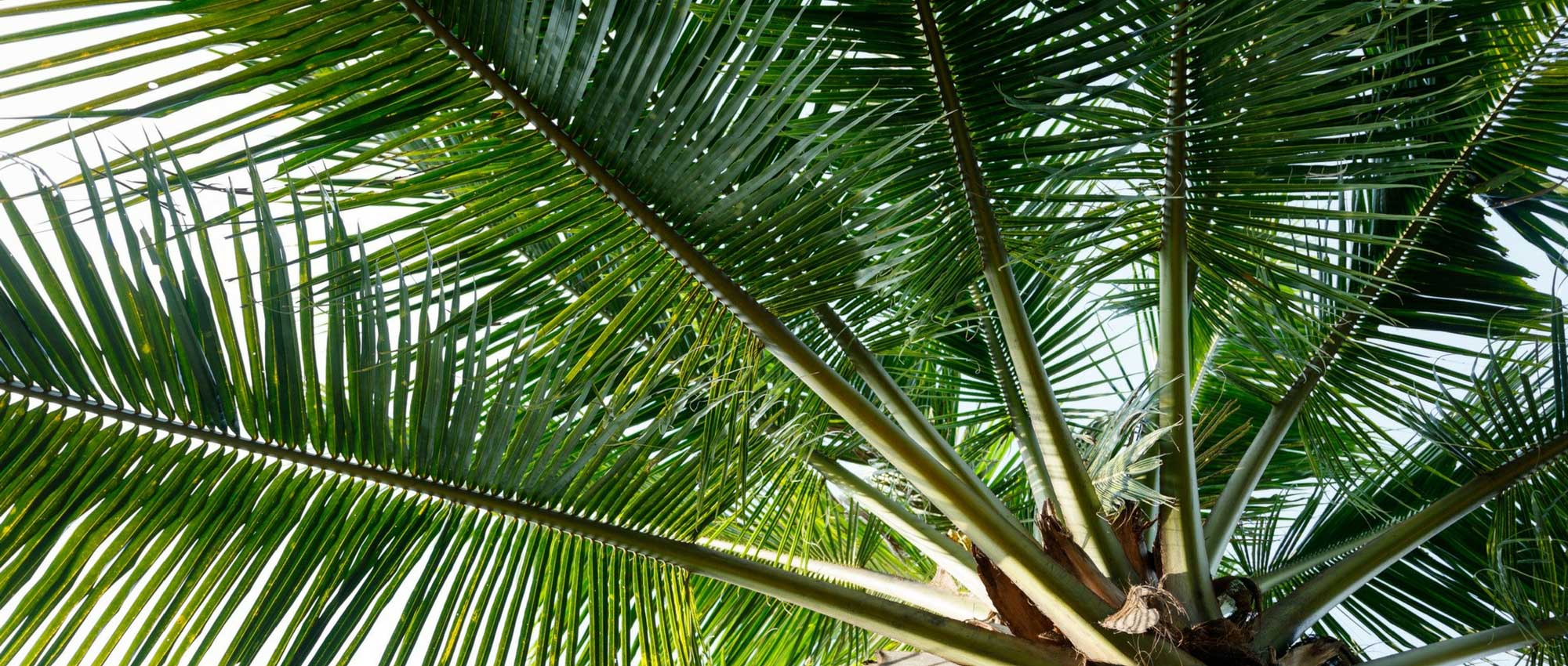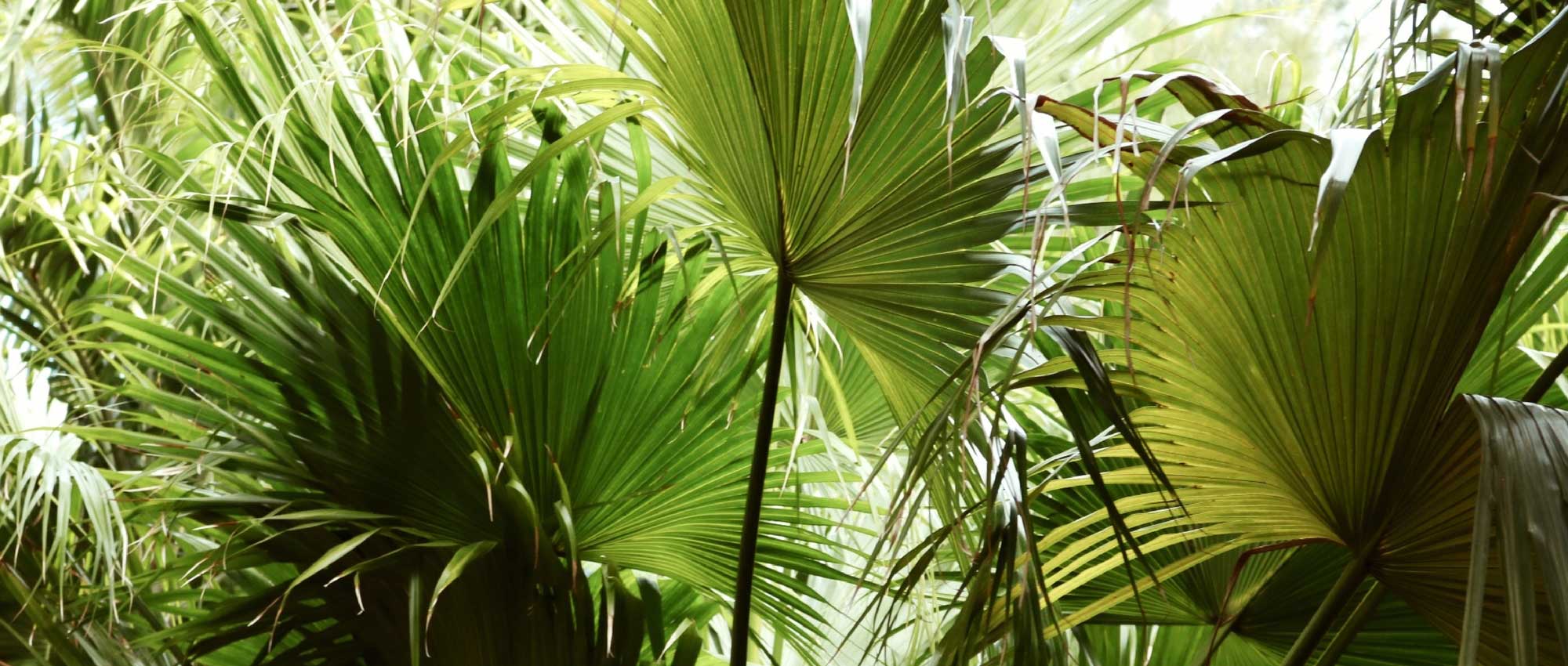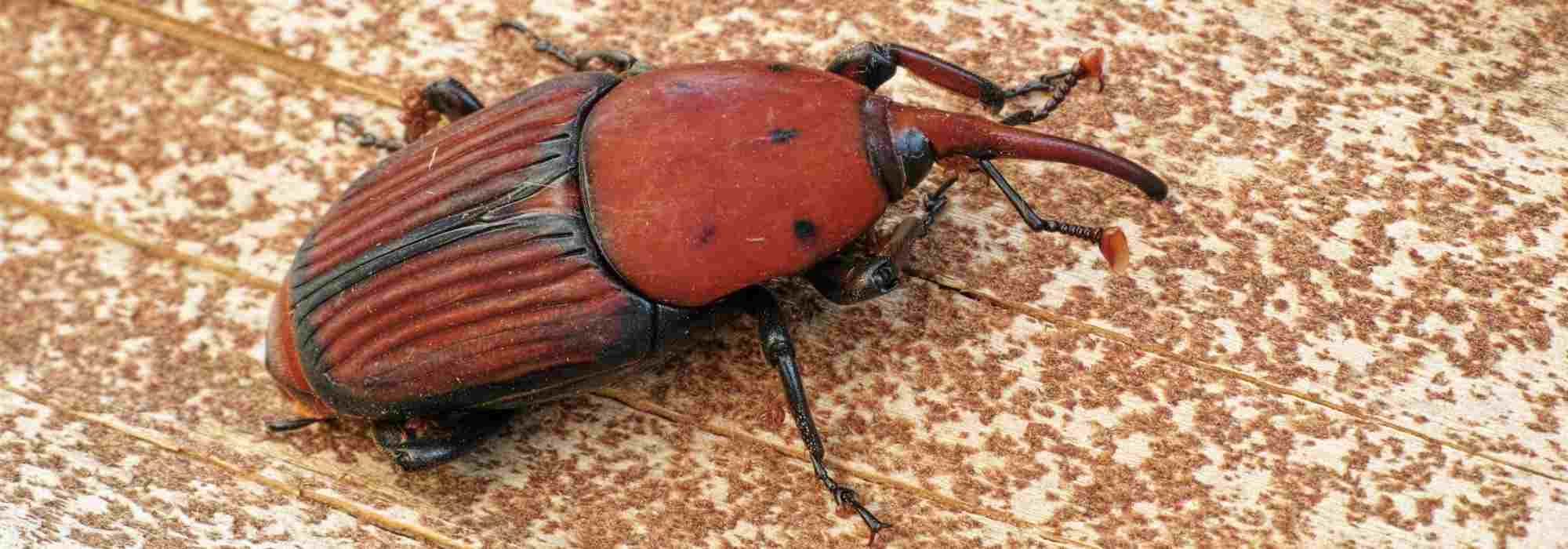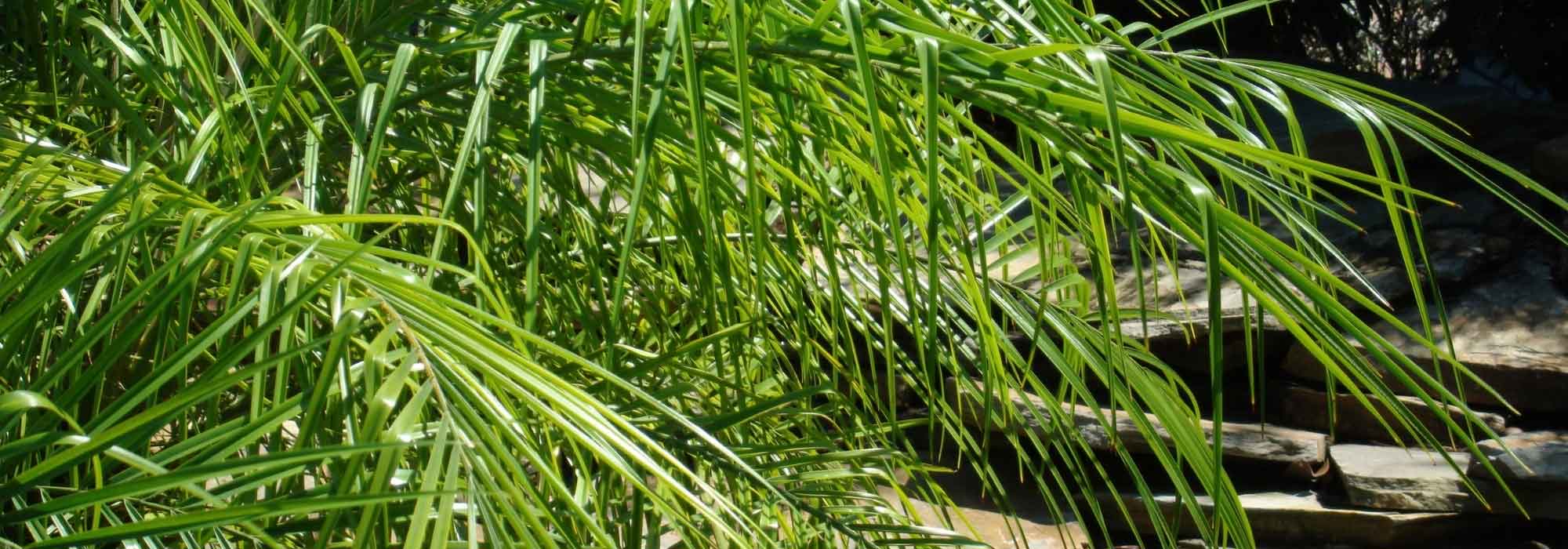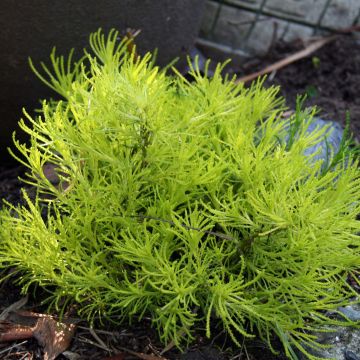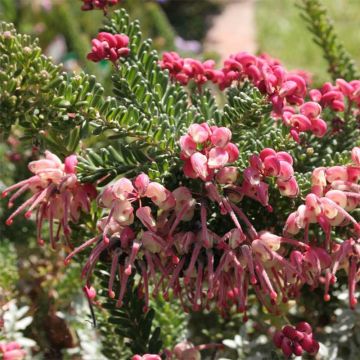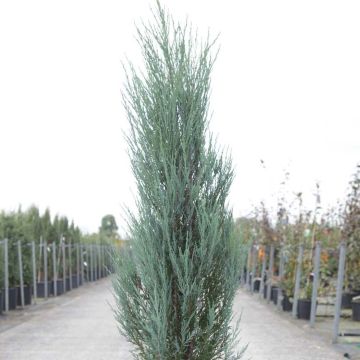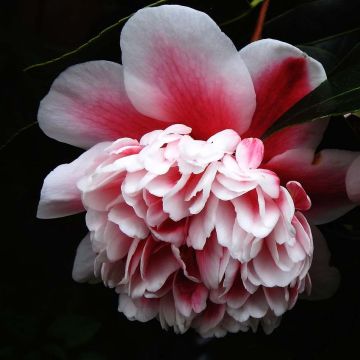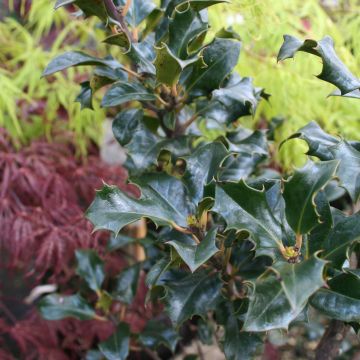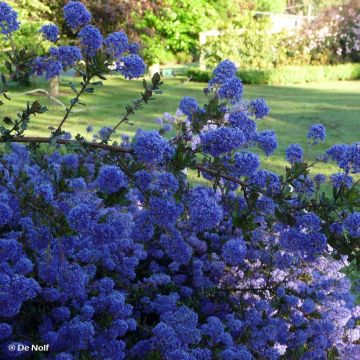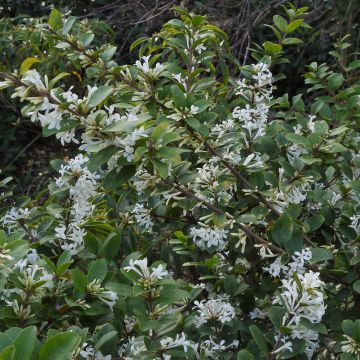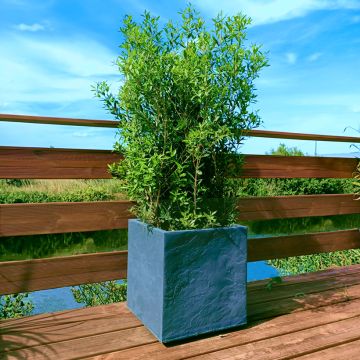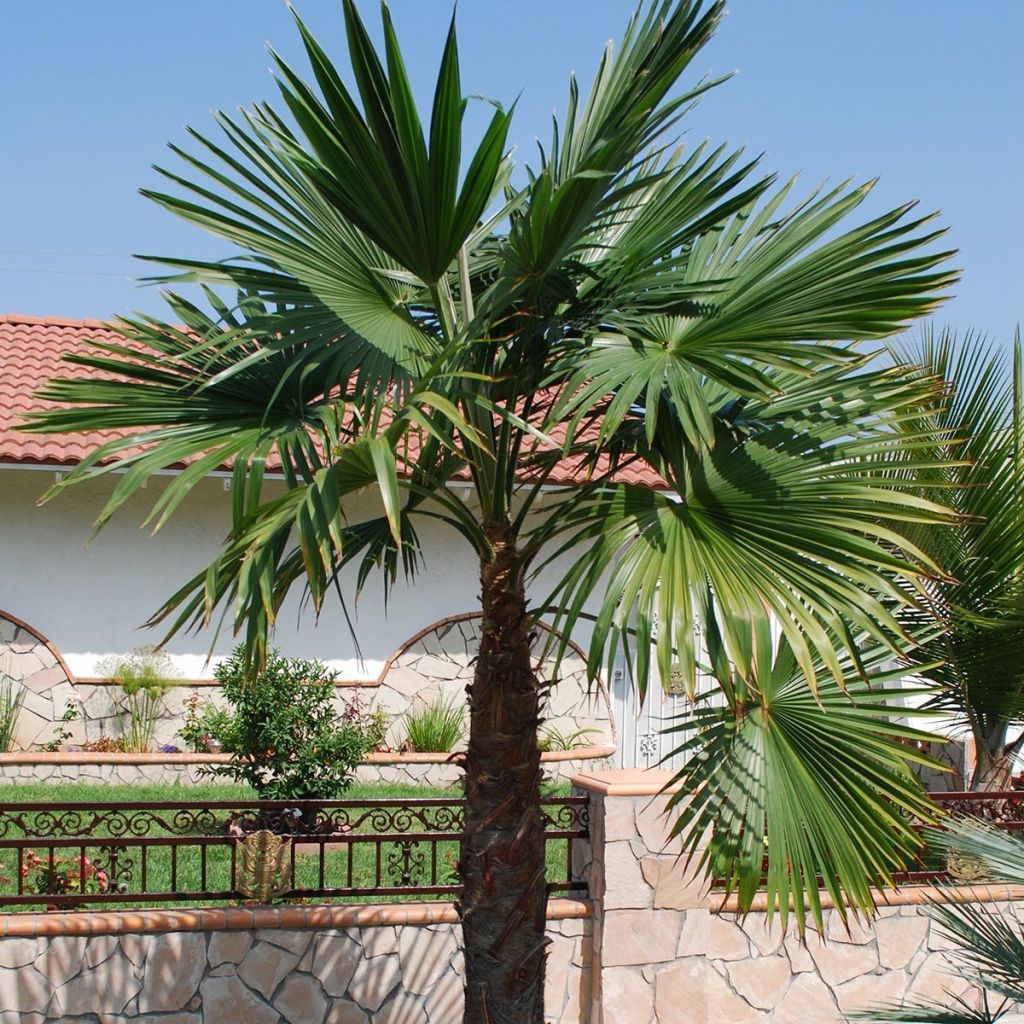

Trachycarpus latisectus - Palmier Windamere
Trachycarpus latisectus - Sikkim Windmill Palm
Trachycarpus latisectus
Sikkim Windmill Palm, Sikkim Himalayan Palm, Windamere Palm
Special offer!
Receive a €20 voucher for any order over €90 (excluding delivery costs, credit notes, and plastic-free options)!
1- Add your favorite plants to your cart.
2- Once you have reached €90, confirm your order (you can even choose the delivery date!).
3- As soon as your order is shipped, you will receive an email containing your voucher code, valid for 3 months (90 days).
Your voucher is unique and can only be used once, for any order with a minimum value of €20, excluding delivery costs.
Can be combined with other current offers, non-divisible and non-refundable.
Why not try an alternative variety in stock?
View all →This plant carries a 24 months recovery warranty
More information
We guarantee the quality of our plants for a full growing cycle, and will replace at our expense any plant that fails to recover under normal climatic and planting conditions.
Would this plant suit my garden?
Set up your Plantfit profile →
Description
Trachycarpus latisectus, also known as the Windamere palm, was discovered about twenty years ago in a remote region of the Sikkim Himalayas. Becoming rare due to the destruction of its habitat, but easily adaptable in temperate regions, it is on the verge of conquering the hearts of collectors and the gardens of exoticism enthusiasts. This species, very different from other Trachycarpus palms, develops a single slender false trunk bearing a crown of extremely decorative large circular leaves. Slow-growing and of modest stature, it eventually forms a very attractive subject with the appearance of a coconut tree. This palm can be planted in the ground in mild climates. Elsewhere, it can be cultivated in pots and stored from November to March in an unheated conservatory or a cold greenhouse.
Trachycarpus latisectus (synonym Trachycarpus sikkimensis) belongs to the Arecaceae family. Its species name, 'latisectus', means 'with wide segments', due to the unusual width of the leaflets that make up the leaves. This palm shows slow growth in cool climates, a little faster if it lacks neither heat nor water. After 10 years, it reaches an average height of 3.5m (11ft), eventually about 10m (33ft) after many years. It develops a slender, hardly 10cm (4in) diameter, grey, ringed stipe or false trunk, which quickly loses the fibres and remnants of old leaves. At the top of this stipe, up to 20 almost circular palmate leaves develop, measuring 70cm (28in) to 1.2m (4ft) wide, divided into 70 tough segments, each about 5cm (2in) wide. The foliage is intensely green and glossy on top, more glaucous underneath. It persists in winter. Each leaf is carried by a petiole measuring 50cm (20in) to over 1m (3ft) in length, with very small teeth.
Flowering occurs in summer on mature plants. Trachycarpus palms are usually dioecious, meaning there are male plants bearing only male flowers and female plants bearing only female flowers. To obtain fruiting, it will therefore be necessary to have one plant of each sex. The rather short and highly branched inflorescences appear every year between the leaves. The abundant flowers are a beautiful bright yellow. Female Trachycarpus latisectus plants produce numerous black-violet fruits, each containing a large brown bean-shaped seed.
Trachycarpus latisectus finds its place in gardens spared by heavy frosts, where it can be placed in isolation, in the centre of a garden bed inspired by exoticism, or in groups of three plants. In a large park, it can also be planted in rows, for example in front of a non-invasive Fargesia bamboo hedge. This species likes heat in summer, and rich and well-drained but moist soils, but it dislikes winter humidity. It can tolerate brief frosts of around -9°C (15.8°F) in dry soil during winter. It prefers non-scorching sun or partial shade, and sheltered exposures, especially from cold winds. Ensure that its base is slightly shaded. When grown in a container, this palm will make a magnificent addition to a patio from April to October. It will spend the winter protected from heavy frosts.
Trachycarpus latisectus - Sikkim Windmill Palm in pictures
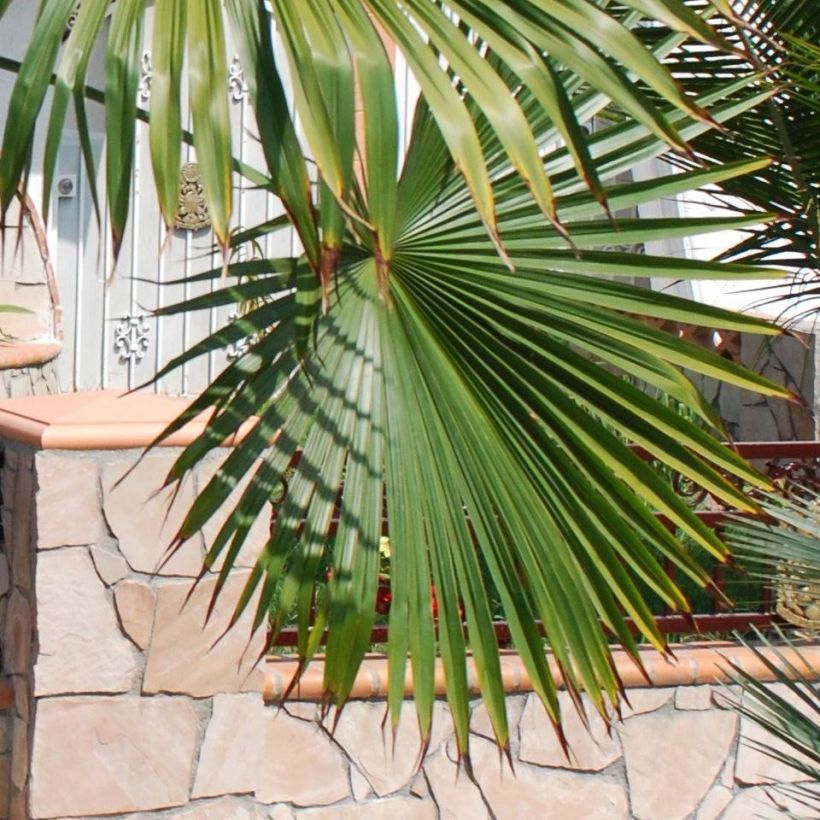

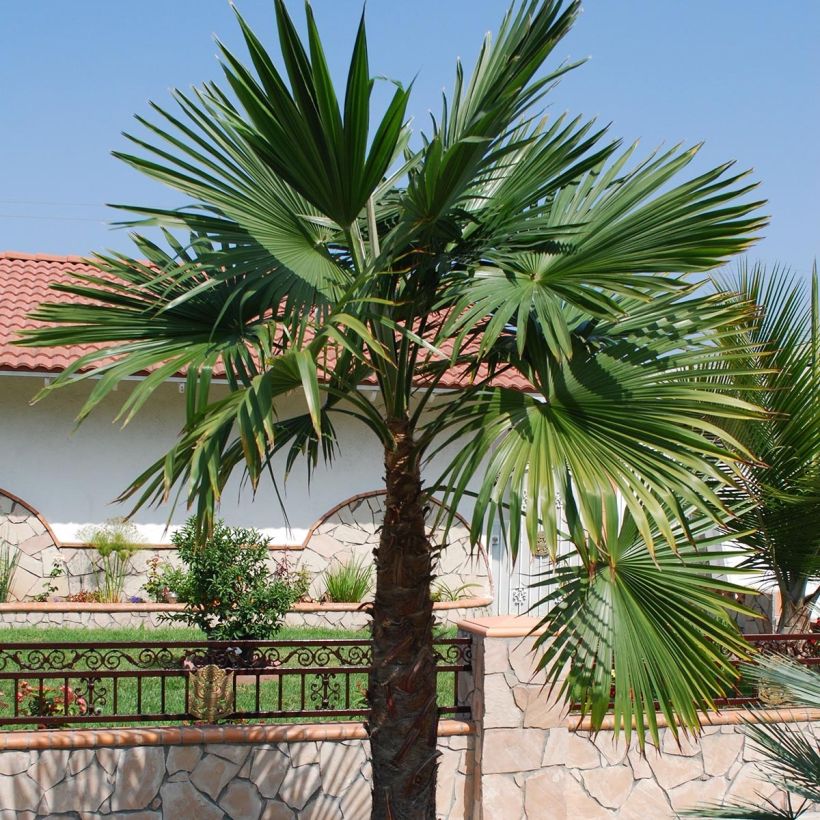

Plant habit
Flowering
Foliage
Botanical data
Trachycarpus
latisectus
Arecaceae
Sikkim Windmill Palm, Sikkim Himalayan Palm, Windamere Palm
Himalayas
Other Trachycarpus
View all →Planting and care
Plant Trachycarpus latisectus in rich, very well-drained soil (even rocky or stony), that is always kept moist in summer. It fears stagnant moisture in winter. If necessary, plant it in a raised bed, in soil enriched with pumice and compost. Cultivation in coastal gardens is possible if the plant is not exposed to salty winds. Place it in a sunny but not scorching position, protected from cold and dry winds, and make sure its base is slightly shaded. Easy to grow, it requires little maintenance except for pruning the oldest fronds close to the stem.
Pot cultivation: choose a large container (30 to 40 litres) with drainage holes at the bottom. Place a layer of drainage material at the bottom of the pot (gravel, stones, clay pellets, pumice, pottery shards). Use a mixture of garden soil, compost, and sand, supplemented with a little seaweed or horn and blood-based fertiliser. Apply fertiliser every spring. Water regularly in summer, especially if it's hot. The plant should be overwintered from early November (or late October depending on the region) in a very bright location, kept frost-free but not heated. Reduce watering in winter, but the growing medium should remain slightly moist.
Planting period
Intended location
Care
Planting & care advice
This item has not been reviewed yet - be the first to leave a review about it.
Similar products
Haven't found what you were looking for?
Hardiness is the lowest winter temperature a plant can endure without suffering serious damage or even dying. However, hardiness is affected by location (a sheltered area, such as a patio), protection (winter cover) and soil type (hardiness is improved by well-drained soil).

Photo Sharing Terms & Conditions
In order to encourage gardeners to interact and share their experiences, Promesse de fleurs offers various media enabling content to be uploaded onto its Site - in particular via the ‘Photo sharing’ module.
The User agrees to refrain from:
- Posting any content that is illegal, prejudicial, insulting, racist, inciteful to hatred, revisionist, contrary to public decency, that infringes on privacy or on the privacy rights of third parties, in particular the publicity rights of persons and goods, intellectual property rights, or the right to privacy.
- Submitting content on behalf of a third party;
- Impersonate the identity of a third party and/or publish any personal information about a third party;
In general, the User undertakes to refrain from any unethical behaviour.
All Content (in particular text, comments, files, images, photos, videos, creative works, etc.), which may be subject to property or intellectual property rights, image or other private rights, shall remain the property of the User, subject to the limited rights granted by the terms of the licence granted by Promesse de fleurs as stated below. Users are at liberty to publish or not to publish such Content on the Site, notably via the ‘Photo Sharing’ facility, and accept that this Content shall be made public and freely accessible, notably on the Internet.
Users further acknowledge, undertake to have ,and guarantee that they hold all necessary rights and permissions to publish such material on the Site, in particular with regard to the legislation in force pertaining to any privacy, property, intellectual property, image, or contractual rights, or rights of any other nature. By publishing such Content on the Site, Users acknowledge accepting full liability as publishers of the Content within the meaning of the law, and grant Promesse de fleurs, free of charge, an inclusive, worldwide licence for the said Content for the entire duration of its publication, including all reproduction, representation, up/downloading, displaying, performing, transmission, and storage rights.
Users also grant permission for their name to be linked to the Content and accept that this link may not always be made available.
By engaging in posting material, Users consent to their Content becoming automatically accessible on the Internet, in particular on other sites and/or blogs and/or web pages of the Promesse de fleurs site, including in particular social pages and the Promesse de fleurs catalogue.
Users may secure the removal of entrusted content free of charge by issuing a simple request via our contact form.
The flowering period indicated on our website applies to countries and regions located in USDA zone 8 (France, the United Kingdom, Ireland, the Netherlands, etc.)
It will vary according to where you live:
- In zones 9 to 10 (Italy, Spain, Greece, etc.), flowering will occur about 2 to 4 weeks earlier.
- In zones 6 to 7 (Germany, Poland, Slovenia, and lower mountainous regions), flowering will be delayed by 2 to 3 weeks.
- In zone 5 (Central Europe, Scandinavia), blooming will be delayed by 3 to 5 weeks.
In temperate climates, pruning of spring-flowering shrubs (forsythia, spireas, etc.) should be done just after flowering.
Pruning of summer-flowering shrubs (Indian Lilac, Perovskia, etc.) can be done in winter or spring.
In cold regions as well as with frost-sensitive plants, avoid pruning too early when severe frosts may still occur.
The planting period indicated on our website applies to countries and regions located in USDA zone 8 (France, United Kingdom, Ireland, Netherlands).
It will vary according to where you live:
- In Mediterranean zones (Marseille, Madrid, Milan, etc.), autumn and winter are the best planting periods.
- In continental zones (Strasbourg, Munich, Vienna, etc.), delay planting by 2 to 3 weeks in spring and bring it forward by 2 to 4 weeks in autumn.
- In mountainous regions (the Alps, Pyrenees, Carpathians, etc.), it is best to plant in late spring (May-June) or late summer (August-September).
The harvesting period indicated on our website applies to countries and regions in USDA zone 8 (France, England, Ireland, the Netherlands).
In colder areas (Scandinavia, Poland, Austria...) fruit and vegetable harvests are likely to be delayed by 3-4 weeks.
In warmer areas (Italy, Spain, Greece, etc.), harvesting will probably take place earlier, depending on weather conditions.
The sowing periods indicated on our website apply to countries and regions within USDA Zone 8 (France, UK, Ireland, Netherlands).
In colder areas (Scandinavia, Poland, Austria...), delay any outdoor sowing by 3-4 weeks, or sow under glass.
In warmer climes (Italy, Spain, Greece, etc.), bring outdoor sowing forward by a few weeks.






























